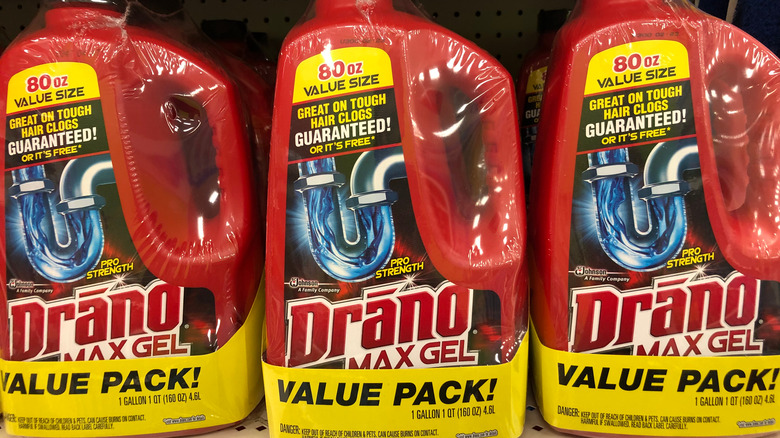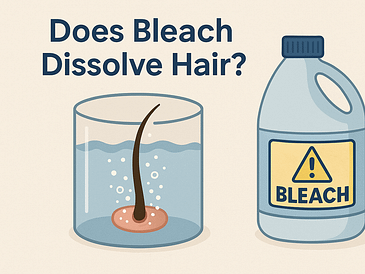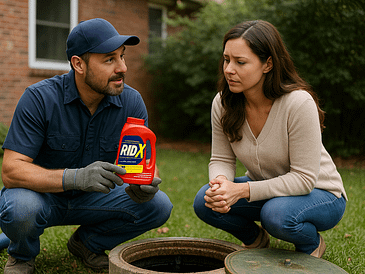Introduction
When it comes to maintaining the health of your pipes, it’s important to separate fact from fiction. One common concern that often arises is whether using Drano can cause damage to your pipes. Let’s take a closer look at this issue and explore the facts.
Importance of maintaining pipe health
Maintaining the health of your pipes is crucial for the functionality and longevity of your plumbing system. Clogged pipes can lead to various problems, including reduced water flow, leaks, and even burst pipes. It’s essential to take proactive measures to prevent clogs and ensure your pipes remain in good condition.
Common misconceptions about Drano
There has been some confusion and debate about whether Drano can damage pipes. The truth is that when used as directed, Drano is generally safe for most pipes. It’s designed to dissolve clogs and clear the pipes effectively. However, it’s important to note that certain types of pipes, such as older or corroded ones, may be more susceptible to damage from chemical drain cleaners like Drano. In such cases, it’s best to consult a professional plumber for advice on the most suitable solution for your specific situation.
In conclusion, maintaining the health of your pipes is crucial, and using products like Drano can help in clearing clogs. However, it’s essential to exercise caution and consider the condition of your pipes before using any chemical drain cleaner. When in doubt, it’s always best to seek professional guidance to ensure the safety and integrity of your plumbing system.

How does Drano work?
Chemical composition of Drano
Drano is a popular household drain cleaner that is designed to dissolve clogs in pipes and restore drainage. It is composed of several key ingredients, including sodium hydroxide (lye), sodium hypochlorite (bleach), and aluminum. These chemicals work together to break down various substances that can cause clogs, such as hair, grease, and soap scum.
Mechanism of action
When Drano comes into contact with water, it undergoes a chemical reaction that generates heat and creates a powerful alkaline solution. This solution works by dissolving and liquefying the clog, allowing it to flow down the drain and restore proper drainage.
Effectiveness of Drano on clogs
Drano is generally effective in removing common clogs in pipes, such as those caused by hair, soap residue, or grease buildup. However, it may not be as effective on more severe clogs or those caused by foreign objects. It is important to follow the instructions on the product label and use Drano as directed. Additionally, it is recommended to use caution when using Drano on older or fragile pipes, as the powerful chemicals in the product can potentially cause damage.
Overall, when used correctly and in accordance with the product instructions, Drano can be a useful tool in clearing minor clogs and improving drainage in your pipes.
Potential damage to pipes
When faced with a clogged drain, many people turn to Drano as a quick and effective solution. However, there is a concern among homeowners about whether Drano can cause damage to their pipes. Let’s explore the potential effects.
Types of pipes affected by Drano
Drano is primarily designed to address clogs in metal pipes. It contains strong chemicals that can dissolve organic matter, such as hair and soap scum. While it can be effective in clearing blockages, it can also cause damage to certain types of pipes.
Corrosive properties of Drano
The main ingredient in Drano is sodium hydroxide, also known as lye. This compound is highly corrosive and can eat away at pipes over time. Plastic pipes, such as PVC or ABS, are particularly susceptible to damage from Drano. It can weaken the pipe walls, leading to cracks or even complete failure.
Long-term effects on pipe health
Using Drano regularly or in excessive amounts can have long-term effects on the health of your pipes. The corrosive properties of Drano can gradually deteriorate the integrity of the pipes, causing leaks or bursts. It is essential to use Drano sparingly and follow the instructions provided to minimize the risk of damage.
In conclusion, while Drano can be effective in clearing clogs, it does have the potential to damage certain types of pipes, particularly plastic pipes. It is crucial to use this product with caution and consider alternative methods or professional plumbing services if you have concerns about potential damage to your pipes.
Alternatives to Drano
When faced with a clogged drain, many people turn to the popular drain cleaner Drano to quickly clear the blockage. However, there are concerns about whether Drano can cause damage to pipes over time. If you are looking for alternatives to Drano, here are some options to consider.
Natural remedies for clogs
- Vinegar and baking soda: This classic combination can help break down clogs without the use of harsh chemicals. Simply pour a cup of baking soda down the drain, followed by a cup of vinegar. Let it sit for a few minutes and then flush with hot water.
- Boiling water: In many cases, pouring boiling water down the drain can help dissolve minor clogs and clear the pipes.
Mechanical solutions for clearing pipes
- Plungers: A plunger can be effective in dislodging clogs in sinks, toilets, and showers. Make sure to use a sturdy plunger designed for the specific type of drain.
- Snake or auger: For more stubborn clogs, a plumbing snake or auger can be used to physically break up or remove the blockage.
Professional plumbing services
If natural remedies and mechanical solutions do not work, it may be time to call in professional plumbing services. Experienced plumbers have the tools and expertise to effectively clear even the most stubborn clogs without causing any damage to your pipes.
Remember, prevention is always better than a cure. To avoid clogs in the first place, make sure to properly dispose of grease, food scraps, and other debris. Regularly cleaning your drains can also help prevent buildup and keep them flowing smoothly.
Best practices for using Drano safely
Reading and following instructions
When it comes to using Drano, it’s important to read and follow the instructions provided on the packaging. While Drano is a widely used drain-cleaning product, it should still be handled with care to ensure safety. Pay attention to any warnings, cautions, or specific instructions mentioned. This will help you use Drano correctly and minimize any potential risks or damage to your pipes.
Proper disposal of Drano
After using Drano, it’s crucial to dispose of it properly. Drano should never be poured down the drain or toilet without flushing it down with a large quantity of water. This helps dilute the chemicals and prevent any potential damage to your pipes or septic system. Additionally, it is recommended to avoid mixing Drano with other cleaning products, as this can lead to chemical reactions and create harmful fumes.
By following these best practices, you can use Drano safely and effectively without causing damage to your pipes. Remember to always exercise caution and consult the product instructions for specific guidance on usage and disposal.
Conclusion
Summary of key points
In summary, while Drano can effectively unclog your pipes, it does come with some potential risks. The chemicals in Drano can be corrosive and may cause damage to pipes if used improperly or in excessive amounts. It’s important to follow the instructions carefully and avoid using Drano in older or delicate pipes.
Overall impact on pipe health
Using Drano sparingly and as directed is unlikely to cause significant damage to your pipes. However, repeated or excessive use can weaken and corrode pipes over time. It’s always advisable to try other methods, such as using a plunger or a drain snake, before resorting to Drano.
Making an informed decision about using Drano
Before using Drano, it’s important to assess the severity of the clog and consider any potential risks. If you have older or vulnerable pipe systems, it may be best to consult a professional plumber. They can provide guidance on the best course of action and recommend safer alternatives to Drano if necessary.
Remember, prevention is key in maintaining healthy pipes. Regular maintenance and proper disposal of grease and other substances can help prevent clogs and the need for harsh chemical solutions like Drano.





